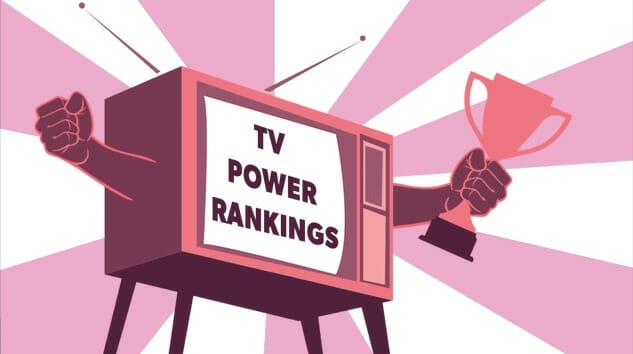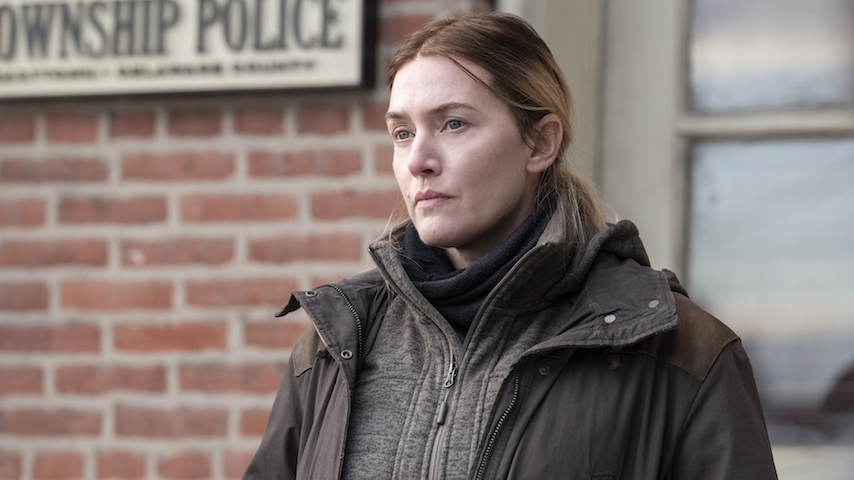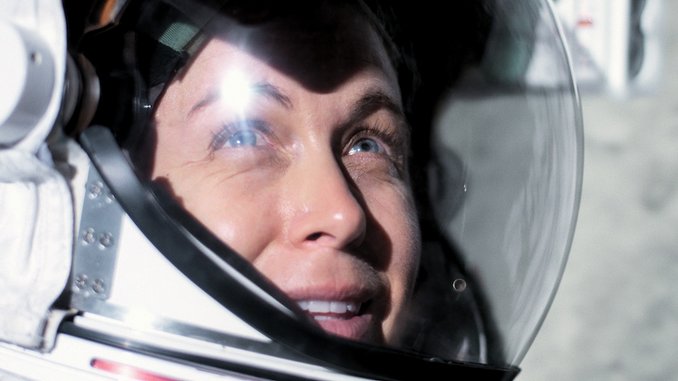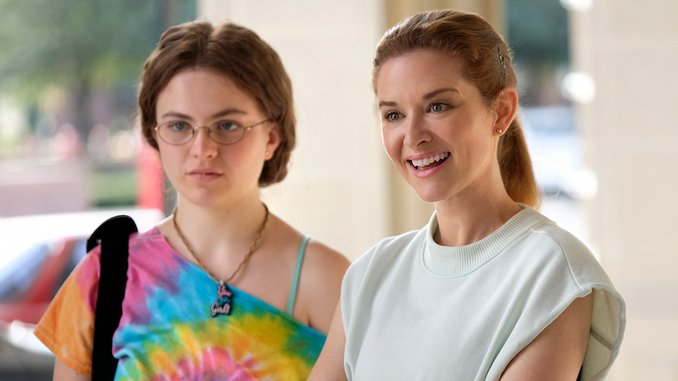Paste Power Ranking: The 5 Best TV Shows on Right Now, from Shadow and Bone to Cruel Summer
Illustration by Christine Fernando and Soleil Collins
Hot girl summer is here, in the form of this week’s Power Rankings. But before we get to the good stuff, we have to acknowledge the rest. Mainly, the Oscars—our Movies Editor Jacob Oller explains why the innovative pandemic-delayed telecast was actually a total mess (that no one watched) here. But there was also the disappointment of The Falcon and Winter Soldier finale which, a Black Captain America aside (huzzah!), was also a total mess (and I explain why here).
However, we are very excited for the advent of Shadow and Bone and Cruel Summer, a combination of series that have us cheering both complicated storytelling and an unapologetic female gaze (both our reviewers used the word “obsession,” and they are not wrong). But wait, there’s more! Rutherford Falls has made a case for actually subscribing to Peacock (!) while For All Mankind and Mare of Easttown continue quietly doing the work of just being excellent dramas. But don’t sleep on our Honorable Mentions, either! There’s a lot of good TV right now. You love to see it, folks.
The rules for the Power Rankings are simple: Any current series on TV qualifies, whether it’s a comedy, drama, news program, animated series, variety show or sports event. It can be on a network, basic cable, premium channel, Netflix, Amazon, Hulu, YouTube or whatever you can stream on your smart TV, as long as a new episode was made available the previous week (ending Sunday) —or, in the case of shows released all at once, it has to have been released within the previous four weeks. The voting panel is composed of Paste Editors and TV writers with a pretty broad range of tastes.
Honorable Mention: The Falcon and The Winter Soldier (Disney+), The Moodys (FOX), The Secrets She Keeps (AMC), Younger (Paramount+), Grey’s Anatomy (ABC)
5. Mare of Easttown

Network: HBO
Last Week’s Ranking: 1
This Week: Evan Peters makes everything even better.
Is there such a thing as a sober, carefully considered obsession? If so, that’s what we encounter in the HBO limited series Mare of Easttown, a show that is ostensibly about a series of deaths in a hardscrabble Pennsylvania town, but is, in reality, about the heavy pain of being alive. The plights of our time are all on display in the series—poverty, depression, drug addiction, suicide—and the debilitating effects are handled with masterful subtlety. This is a Kate Winslet vehicle through and through, and for an actor once described as having the “soul and attitude of a jobbing actress, trapped in the body of a movie star,” here again we see her embodying a pained, difficult character who is not always sympathetic. As Mare Sheehan, police detective and former high school basketball star, she has suffered, and suffered, and suffered some more in ways that leave her defiant, sarcastic, and cynical, but too tough to be broken. It’s not an easy psychological space to occupy, but Winslet, looking appropriately haggard except in the rare cases when she decides to be beautiful—moments of hope that are almost more painful than the perpetual fatigue of reality—is more than equal to the task, carrying the show with all the brilliance you’d expect from somebody so talented. If you come to Mare for Kate Winslet, as many will, you won’t be disappointed.
There can be a nagging tendency, when depicting “strong women,” to atone for years of under-representation on the screen by turning them into invulnerable super women, conflating the two genres—drama and comic book—that should be kept separate. Mare stands out for its realistic depictions of this strength, highlighting not just the impressive resilience of its women, but the ways in which the need for this resilience takes its toll, both over time and in harsh, shattering moments. When those characters falter, or even break, it only serves to highlight that underlying strength; these are portraits written and directed by human beings with a deep understanding of how life works on the psychological margins. —Shane Ryan
4. For All Mankind

Network: Apple TV+
Last Week’s Ranking: Honorable Mention
This Week: A nail-biter finale for (quietly) one of the year’s best shows.
It’s no secret that in its 1983-set sophomore season, For All Mankind is putting guns on the moon.
Guns. On the moon.
In the timeline of For All Mankind, the meticulously crafted alt-history science fiction series from Ronald D. Moore, Matt Wolpert, and Ben Nedivi that turns the Space Race on its head by imagining it was the Soviets who landed the first man on the moon, guns are just the latest in a long line of things our own space program hadn’t even considered launching into orbit before 1983: Guns. Television sets. A lunar research base. A lunar mining operation. A Martian rover. The Bob Newhart Show. Black people. Women.
There’s a lot more going on in the second season of For All Mankind than the issue of guns on the moon, of course—as it did in its first season, the series continues to excel at balancing its sprawling ensemble of characters, all of whom are driven by a dizzying array of motivations, with the precise textural demands of a well-dressed period piece. Moreover, it sets itself apart as the rare prestige streaming series that not only makes use of its episodes’ hour-plus runtimes, but treats them as unique pearls, strung together to make a complete streaming necklace. Watch with your pause button at the ready, and have at least one person over the age of 50 on hand (and/or a browser open to Wikipedia) to make sense of the dozens of historical changes the show wants to establish. They clearly had a lot of fun imagining every bit of it; you deserve to get in on that fun, too. —Alexis Gunderson
3. Rutherford Falls

Network: Peacock
Last Week’s Ranking: Not Eligible
This Week: Michael Schur’s new comedy finds just the right balance.
Rutherford Falls has all the makings of a typical Michael Schur sitcom: a catchy little jingle of a theme song, with mirrored musical interludes sprinkled into the story; topical pop culture references; an endearing slew of quirky characters; workplace banter. If you’ve even remotely enjoyed the comedies that have come before it (like Parks and Rec or Brooklyn Nine-Nine), you’re sure to enjoy Peacock’s latest addition to the bunch. The concept blends a traditional workplace comedy with deeper, more dramatic topics surrounding colonialism, Indigenous land, and, of course, “cancel culture”—all of which, when tossed around with clumsy humor, can land like a rotten egg on linoleum. Fortunately, with quick-witted writing and easy-going performances, Rutherford Falls opens unsuspecting, nuanced discussions on the once-fraught subjects.
The most controversial aspect about watching Rutherford Falls? You’ll have to subscribe to Peacock, NBC’s relatively new streaming platform that houses most of Schur’s other series. If that bounty hasn’t seduced you yet, let Rutherford Falls be the straw that breaks the camel’s back: it may not be perfect, but it’s more than worthy of a friendly stream. In other words, it’s Peacock’s first original show with real promise—best to get started now, in case it hits the masses like a true protege of The Office or Parks and Rec might. —Fletcher Peters
2. Cruel Summer

Network: Freeform (Next day on Hulu)
Last Week’s Ranking: Not Eligible
This Week: The crime aside, the 90s-set nostalgia is real.
I had to give up taking notes on Cruel Summer, Freeform’s new 90s-set teen mystery series, about 2,000 words in. That said, the very density that prompted me to get 2,000 words deep in a meticulous kind of madness before changing course is precisely the thing that’s likely to turn Cruel Summer into the internet’s next big generation-spanning hit. Truly, from its complex, triple-layered timeline to its compellingly intimate POV-flipping narrative structure to its viscerally accurate mid-90s details, Cruel Summer is custom-built to be an object of social media obsession.
In the one corner, you have Aurelia’s Jeanette Turner, who at any given moment is a sweetly awkward 15, or a recently popular 16, or a universally despised 17, and who may or may not be guilty of compounding another girl’s trauma. In the other corner, you have Holt’s Kate Wallis, who at any given moment is a universally beloved 15, or a freshly traumatized 16, or an acidly angry 17. In between them, you have a gulf of not-knowing—a not-knowing that at any given moment might come from one character’s inherent duplicity, the natural gaps in another’s first-hand knowledge of a situation, or the fundamental unreliability of memory even before intense emotion is involved. There are some truths that are more real for some characters, and less for others; some realities that are more tangible in one moment than they are in the next.
The likelihood that one girl is lying and the other telling the truth hangs over Cruel Summer like a thundercloud, but in giving the audience just one walled-off chunk of each girl’s side of the narrative at a time, the possibility that they’re both telling a story that’s true to them is just as present. In floating the mid-90s media’s take on Jeanette and Kate to the top of its story over and over again, Cruel Summer adds an important third perspective on the nature of reality, and all the ways in which it can be warped in the name of “truth.” —Alexis Gunderson
1. Shadow and Bone

Network: Netflix
Last Week’s Ranking: Not Eligible
This Week: “KISS!!” we collectively screamed at our televisions.
Since Game of Thrones, all the cable and streaming networks have been looking for its successor. For many reasons, not many have ignited on a zeitgeist scale. Shadow and Bone feels like the first real contender. It lands across the board with its production value, tone, visual effects, and engaging characters, culminating in an exhilarating season finale which all points to a potential large-scale hit.
As a non-reader of Leigh Bardugo’s Grishaverse novels, but a great admirer of richly crafted, adapted fantasy on television and film, I went into Netflix’s Shadow and Bone cold. All I expected was that—as with most intricate world-building that transitions from page to screen—there’s often a steep learning curve in the pilot, as the language, regions, factions, and magical terminology gradually makes sense. Costumes can be a big visual shorthand with that, and let me tell you, this series offers a level of visual embroidery porn I was not prepared for.
This fabric cheat sheet was deeply appreciated, because the drab military wear of orphans-to-First Army BFFs, cartographer Alina Starkov (Jessie Mei Li) and tracker Malyen “Mal” Oretsev (Archie Renaux) make it clear these two outsiders are nothing in the eyes of those they report to in their encampment on the edge of the Unsea, or the Shadow Fold, a black magic cloud of evil mojo created by a Grisha hundreds of years ago. It splits the country of Ravka in two, making access to needed foods, supplies, and resources dire. Impossible to cross without Grisha help (and even then, there’s no guarantee because of the volcra monsters flying inside, ready to attack), it’s a sore point for the entire world. In particular, the leader of the Grisha, General Kirigan (Ben Barnes), a.k.a. the Darkling, is a Shadow Summoner obsessed with fixing the Fold. But can only do that with the powers of a Sun Summoner, someone who has never existed in their history… until now.
Of particular success is how well Heisserer and his writers set up the required mythology in eight episodes without being exhausting, all the while deftly laying an emotional foundation. The show also weaves an ensemble of support characters into strong B and C stories that are interesting enough to exist on their own, yet masterfully bump in and out of lead’s journey throughout. Here’s hoping Shadow and Bone takes off as our next great fantasy obsession. —Tara Bennett
For all the latest TV news, reviews, lists and features, follow @Paste_TV.



































